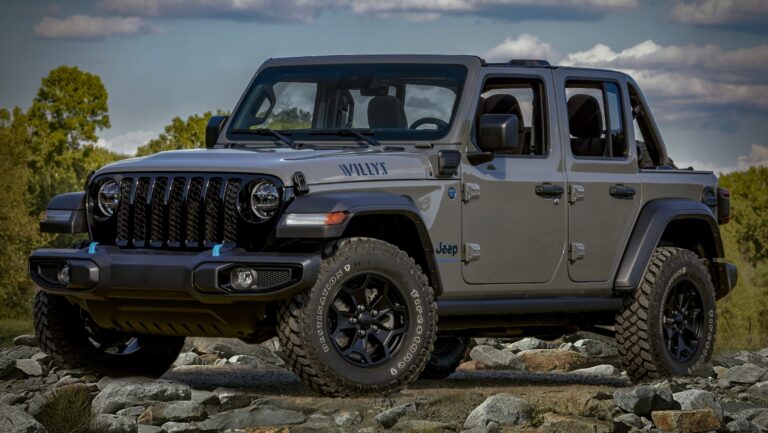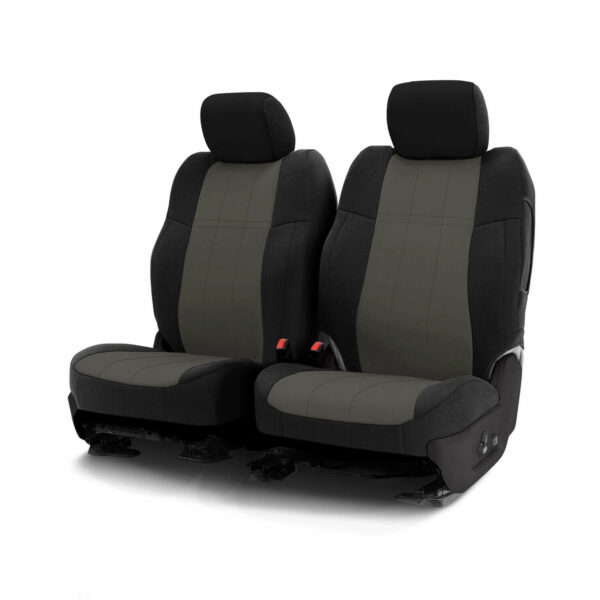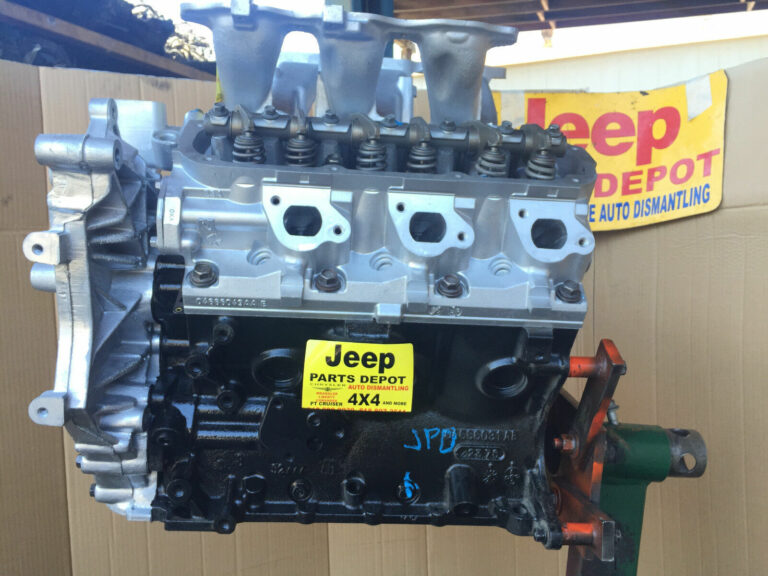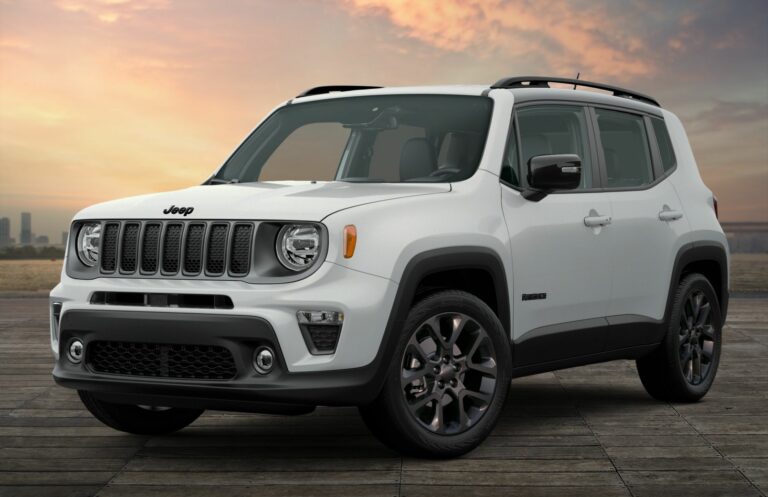Jeep Wrangler 2 Door MPG: Unpacking Fuel Efficiency in an Icon
Jeep Wrangler 2 Door MPG: Unpacking Fuel Efficiency in an Icon jeeps.truckstrend.com
The Jeep Wrangler 2-door is more than just a vehicle; it’s an embodiment of adventure, freedom, and an unmistakable American icon. Known for its unparalleled off-road prowess, removable doors, and open-air driving experience, the 2-door Wrangler holds a special place in the hearts of enthusiasts. However, for many prospective and current owners, one crucial question often arises: "What about its MPG?" Fuel efficiency, or Miles Per Gallon (MPG), is a significant consideration in today’s world, impacting running costs, environmental footprint, and daily convenience. Understanding the nuances of Jeep Wrangler 2-door MPG is essential, as it’s a topic often misunderstood and influenced by a multitude of factors unique to this rugged machine. This comprehensive guide will delve deep into the world of 2-door Wrangler fuel economy, offering insights, practical advice, and a clear picture of what to expect from this legendary off-roader.
Jeep Wrangler 2 Door MPG: Unpacking Fuel Efficiency in an Icon
Understanding Jeep Wrangler 2-Door MPG: The Official Numbers
When discussing any vehicle’s fuel efficiency, the official EPA (Environmental Protection Agency) estimates serve as the baseline. These figures are derived from standardized tests conducted under controlled conditions, providing a comparable metric across different vehicles. For the Jeep Wrangler 2-door, these numbers vary significantly based on the model year, engine type, and transmission.
Historically, the 2-door Wrangler, particularly models prior to the current JL generation, was not celebrated for its fuel economy. The older 3.8L V6 in the JK generation (2007-2011) offered around 15 MPG city and 19 MPG highway. The introduction of the 3.6L Pentastar V6 in 2012 significantly improved these figures, bringing them closer to 17 MPG city and 21-23 MPG highway, depending on the transmission.
The current JL generation of the 2-door Wrangler offers more diverse powertrain options, each with its own MPG profile:
- 3.6L Pentastar V6 (with eTorque Mild-Hybrid System in some configurations): This remains the most common engine. Paired with the 8-speed automatic transmission, it typically yields EPA estimates of around 17 MPG city, 23-25 MPG highway, and 19-20 MPG combined. Manual transmission versions might see slightly different numbers.
- 2.0L Turbocharged Inline-4 (with eTorque): Introduced in the JL, this engine offers a more modern, torque-rich experience. It generally provides the best fuel economy for the 2-door Wrangler, with EPA estimates often reaching 21 MPG city, 24 MPG highway, and 22 MPG combined. Its efficiency gains are particularly noticeable in city driving.
- 3.0L EcoDiesel V6: While more commonly found in the 4-door Wrangler due to its higher cost and weight, some 2-door models (though rare) might feature this diesel engine. It boasts impressive highway MPG figures, often in the high 20s or even low 30s, but its initial cost and diesel fuel availability are factors.

It’s crucial to remember that these are estimates. Real-world MPG can, and often does, deviate from these figures due to various factors we’ll explore next.
Factors Influencing Real-World MPG in Your 2-Door Wrangler
The gap between EPA estimates and actual fuel economy is often wider for a vehicle like the Jeep Wrangler than for a standard sedan. This is due to the Wrangler’s unique design, intended purpose, and the ways owners customize and drive them.

- Engine Type and Transmission: As mentioned, the 2.0L turbo typically outperforms the 3.6L V6 in terms of MPG, especially in mixed driving. The 8-speed automatic transmission generally optimizes shifting for better efficiency compared to older automatics or even manual transmissions, depending on the driver’s skill.
- Tire Size and Type: This is perhaps the most significant factor. Larger, heavier, and more aggressive off-road tires (e.g., mud-terrains or all-terrains with large lugs) create more rolling resistance and weigh more than stock tires. This dramatically reduces MPG. Going from a stock 32-inch tire to a 35-inch or larger tire can easily drop fuel economy by 2-5 MPG or more.
- Lift Kits and Aerodynamics: Raising the vehicle’s suspension (lift kits) increases its frontal area and disrupts airflow, making it less aerodynamic. The Wrangler, by nature, is a brick on wheels; any modification that increases drag will directly impact MPG, especially at highway speeds.
- Driving Style: Aggressive acceleration, hard braking, and excessive speed are fuel economy killers. Smooth, gradual inputs are key. For every 5 mph over 50 mph, your MPG can drop by about 7%.
- Terrain and Driving Conditions:
- City Driving: Frequent stops, starts, and idling consume more fuel.
- Highway Driving: Generally more efficient due to consistent speeds, but high speeds (above 65-70 mph) or strong headwinds will reduce efficiency.
- Off-Roading: Low-range gearing, navigating challenging terrain, and frequent wheel spin will drastically reduce MPG to single digits or even lower during active off-roading.
- Added Weight: Every pound added to your Wrangler requires more energy to move. Heavy aftermarket steel bumpers, winches, roof racks, extra gear, and even a full tank of gas contribute to reduced efficiency.
- Maintenance Neglect: A poorly maintained engine runs less efficiently. Clogged air filters, old spark plugs, incorrect tire pressure, and overdue oil changes can all negatively impact MPG.
- Weather Conditions: Cold weather reduces fuel efficiency because engines take longer to warm up, and winter-blend fuels have less energy content. Strong headwinds significantly increase aerodynamic drag.
- Gearing: Aftermarket axle re-gearing to accommodate larger tires can sometimes improve usable power, but if not matched correctly or if overly aggressive for daily driving, it can negatively impact highway MPG.

Practical Tips to Improve Your 2-Door Wrangler’s MPG
While the 2-door Wrangler isn’t designed to be a fuel-sipping marvel, there are actionable steps you can take to optimize its fuel economy without sacrificing its core capabilities.
- Maintain Proper Tire Pressure: This is the easiest and most effective tip. Underinflated tires increase rolling resistance. Check your tire pressure regularly, ideally weekly, and keep it at the manufacturer’s recommended PSI (found on a sticker inside the driver’s door jamb).
- Lighten the Load: Remove any unnecessary weight from your Wrangler. Do you really need that heavy recovery gear or spare jerry cans for your daily commute? Every pound adds up.
- Drive Smart:
- Smooth Acceleration and Braking: Avoid jackrabbit starts and sudden stops. Accelerate gradually and anticipate traffic to coast to a stop.
- Maintain Consistent Speed: Use cruise control on the highway to avoid speed fluctuations.
- Observe Speed Limits: Driving faster significantly increases aerodynamic drag.
- Limit Idling: If you’re going to be stopped for more than 30 seconds, consider turning off your engine.
- Aerodynamic Considerations:
- Remove Unnecessary Accessories: If you have a roof rack, light bar, or cargo basket that isn’t being used, consider removing it to reduce drag.
- Soft Top vs. Hard Top: While slight, a soft top can sometimes offer marginally better aerodynamics than a hard top with exposed latches and less smooth surfaces.
- Regular Maintenance is Key:
- Engine Tune-Up: Follow your owner’s manual for recommended service intervals. Clean air filters, fresh spark plugs, and proper fluid levels ensure the engine runs at peak efficiency.
- Oil Changes: Use the recommended oil viscosity.
- Wheel Alignment: Proper alignment reduces tire wear and rolling resistance.
- Consider Tire Choice (If Applicable): If your Wrangler is primarily a daily driver and rarely sees serious off-road action, consider all-terrain tires that are lighter and have a less aggressive tread pattern than dedicated mud-terrains. Stick to stock or slightly larger tire sizes rather than extreme ones.
- Plan Your Routes: Combine errands, avoid rush hour traffic, and utilize navigation apps to find the most efficient routes.
Comparing Generations and Engines: A Deeper Dive into 2-Door Wrangler MPG
The evolution of the 2-door Wrangler has brought notable improvements in fuel efficiency, primarily driven by powertrain advancements.
- JK (2007-2018): Early JK models with the 3.8L V6 were notoriously thirsty. The introduction of the 3.6L Pentastar V6 in 2012 marked a significant leap, offering better power and noticeably improved MPG. A 2012-2018 2-door JK with the 3.6L and automatic transmission might average 17-19 MPG combined in real-world driving.
- JL (2018-Present): The JL generation took efficiency a step further. While the 3.6L Pentastar remains a popular choice, its pairing with the 8-speed automatic transmission and the optional eTorque mild-hybrid system enhances its efficiency, especially in stop-and-go traffic. The real game-changer for MPG, however, is the 2.0L Turbocharged Inline-4 with eTorque. This engine, despite its smaller displacement, offers competitive horsepower and impressive torque, delivering a more fuel-efficient package for daily driving. It often feels quicker off the line than the V6 due to its low-end torque. Owners consistently report better city and combined MPG with the 2.0L turbo compared to the 3.6L V6.
While the 3.0L EcoDiesel offers the highest potential for highway MPG, its cost premium and the fact that it’s less common in the lighter 2-door models make it a niche choice for fuel economy. For most 2-door Wrangler buyers focused on efficiency, the 2.0L turbo is the practical winner.
The Trade-Off: MPG vs. Capability
It’s crucial to approach the topic of Jeep Wrangler 2-door MPG with realistic expectations. The Wrangler is fundamentally engineered for off-road capability, durability, and iconic style, not for class-leading fuel economy. Its solid axles, robust four-wheel-drive system, boxy shape, and inherent weight all contribute to a less aerodynamic and less fuel-efficient profile compared to unibody SUVs or sedans.
Owning a 2-door Wrangler means embracing a vehicle that excels in traversing challenging terrain, offering an unmatched sense of adventure, and holding its value remarkably well. The "Jeep tax" on fuel is often considered a small price to pay for the freedom and capability it provides. While you can optimize your driving habits and maintain your vehicle to maximize MPG, you won’t transform it into a hybrid sedan. The balance lies in appreciating its strengths while understanding its inherent limitations in fuel efficiency.
Estimated Jeep Wrangler 2-Door MPG by Model Year and Powertrain
This table provides a representative overview of EPA estimated MPG for various recent 2-door Jeep Wrangler configurations. Real-world results may vary.
| Model Year Range | Engine | Transmission | City MPG | Highway MPG | Combined MPG | Notes |
|---|---|---|---|---|---|---|
| 2012-2018 (JK) | 3.6L Pentastar V6 | 5-speed Auto | 17 | 21 | 18 | Significant improvement over prior JK engines. |
| 2012-2018 (JK) | 3.6L Pentastar V6 | 6-speed Manual | 17 | 21 | 18 | Manual often mirrors auto, depends on driver. |
| 2018-Present (JL) | 3.6L Pentastar V6 | 8-speed Auto | 17 | 23 | 19 | Improved transmission for better highway efficiency. |
| 2018-Present (JL) | 3.6L Pentastar V6 w/ eTorque | 8-speed Auto | 19 | 24 | 21 | Mild-hybrid system aids city MPG. |
| 2018-Present (JL) | 2.0L Turbo I4 w/ eTorque | 8-speed Auto | 21 | 24 | 22 | Best efficiency for gasoline 2-door JL. |
| 2020-Present (JL) | 3.0L EcoDiesel V6 | 8-speed Auto | 22 | 29 | 25 | Rare in 2-door, but offers highest highway MPG. |
Note: These figures are EPA estimates for stock configurations. Modifications like larger tires, lift kits, and heavy accessories will significantly reduce these numbers.
Frequently Asked Questions (FAQ) about Jeep Wrangler 2-Door MPG
Q1: Is the 2-door Wrangler more fuel-efficient than the 4-door Wrangler?
A1: Generally, yes, but only slightly. The 2-door Wrangler is lighter and has a shorter wheelbase, which typically translates to marginally better MPG than its 4-door counterpart when equipped with the same engine and transmission. The difference is usually 1-2 MPG.
Q2: Does removing the doors and top improve MPG?
A2: Removing the doors and top reduces the vehicle’s weight, which can theoretically improve MPG slightly. However, the resulting disruption in aerodynamics due to the open cabin and lack of smooth surfaces might counteract some of these gains, especially at higher speeds. The effect is usually negligible for practical purposes.
Q3: Is the 2.0L turbo engine worth it for the MPG gains in the 2-door Wrangler?
A3: For many daily drivers, absolutely. The 2.0L turbo offers noticeably better city and combined MPG compared to the 3.6L V6, along with strong low-end torque. If fuel economy is a higher priority than the traditional V6 feel, the 2.0L turbo is an excellent choice.
Q4: How much does off-roading affect the 2-door Wrangler’s MPG?
A4: Significantly. During active off-roading, especially in low-range 4×4, steep climbs, or navigating challenging terrain, fuel consumption can skyrocket. You might see MPG drop into single digits, as the engine is working much harder, and speeds are very low.
Q5: Can I use regular 87 octane fuel in my Jeep Wrangler 2-door?
A5: For the 3.6L Pentastar V6, 87 octane (regular unleaded) is perfectly acceptable and recommended. For the 2.0L turbocharged engine, Jeep recommends 87 octane, but suggests 91 octane (premium) for optimal performance and potentially slightly better efficiency, especially under heavy loads or hot conditions. Using 91 octane is not required but can be beneficial. For the EcoDiesel, only diesel fuel should be used.
Q6: Does adding a lift kit and larger tires drastically reduce MPG?
A6: Yes, this is one of the most impactful modifications. Larger, heavier tires increase rolling resistance and unsprung weight, while lift kits worsen aerodynamics. It’s common for owners to see a 2-5 MPG drop, or even more, after such modifications.
Conclusion
The Jeep Wrangler 2-door is an icon, a vehicle synonymous with adventure and unparalleled capability. While its boxy design and rugged underpinnings inherently mean it won’t be topping any fuel efficiency charts, understanding its MPG characteristics is crucial for informed ownership. By recognizing the factors that influence real-world fuel economy – from engine choice and transmission to tire size, driving habits, and maintenance – owners can manage expectations and implement practical strategies to optimize their vehicle’s efficiency.
The evolution of the Wrangler, particularly with the introduction of the 2.0L turbocharged engine in the JL generation, demonstrates Jeep’s commitment to offering more efficient options without compromising the vehicle’s legendary off-road prowess. Ultimately, owning a 2-door Wrangler is a choice to embrace a lifestyle of freedom and capability. While you might visit the gas pump more often than a sedan owner, the experiences and adventures a Wrangler unlocks are, for many, priceless. By being mindful of your driving and maintenance, you can ensure your 2-door Wrangler delivers the best possible fuel economy while continuing to be the ultimate expression of your adventurous spirit.





